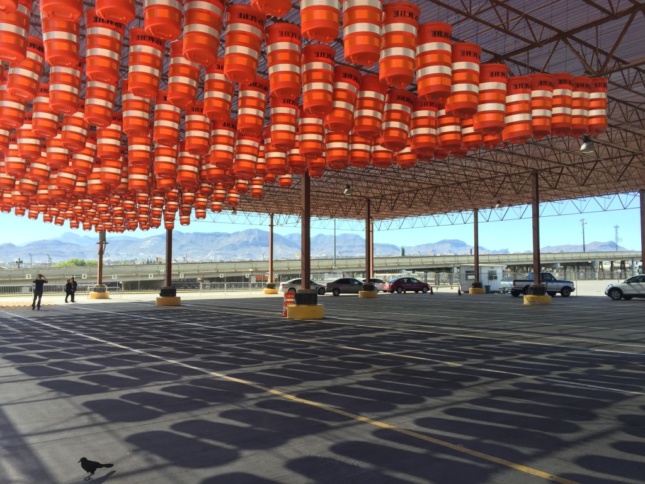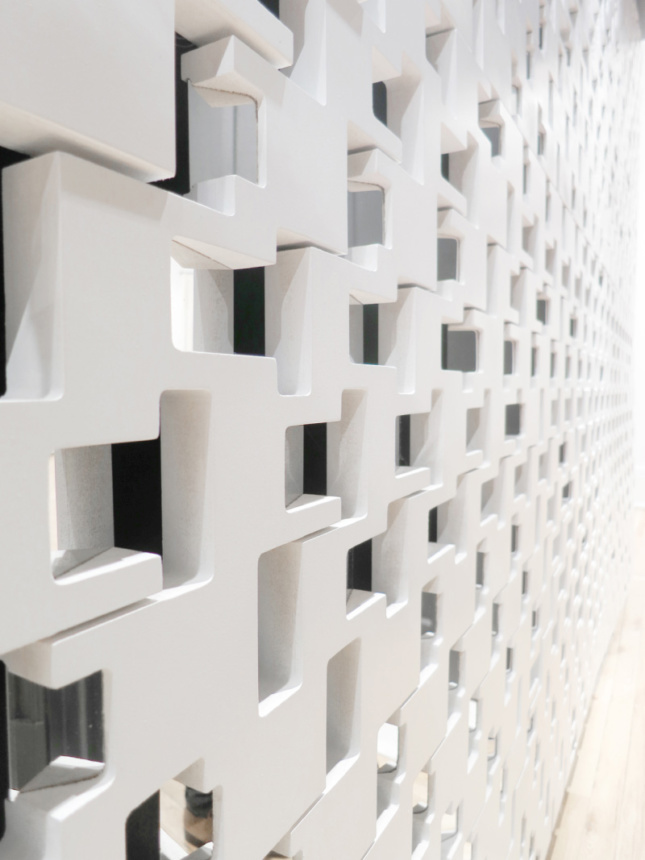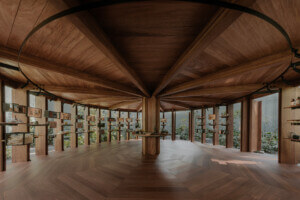The Architectural League of New York’s Emerging Voices award and lecture series highlights individuals and firms with distinct design “voices”, singling out those with the potential to go on to even greater heights.
2018 saw two rounds of judging; first by a panel of past Emerging Voices winners, and a second to pick the winners. The first-round jury included Virginia San Fratello, Sebastian Schmaling, Wonne Ickx, Lola Sheppard, Marcelo Spina, Carlos Jimenez, and Marlon Blackwell, as well as members of the second-round jury, Sunil Bald, Lisa Gray, Stella Betts, Jing Liu, Paul Makovsky, Tom Phifer, Chris Reed, and Billie Tsien.
AN originally profiled all of the emerging voices firms in our February print issue. AGENCY founders Ersela Kripa and Stephen Mueller will deliver their lecture on March 8, 2018, at the SVA Theatre in Manhattan.
Ersela Kripa and Stephen Mueller started AGENCY to consider the margins of the world. “We use our architectural training to uncover the shrinking of individual agency in public space and the reduction of human rights or potential human rights violations,” Kripa said. Working out of El Paso, Texas, the pair deploys words, maps, wearables, and installations to uncover contradictions in liminal spaces like military training sites, refugee camps, and borders—especially the one between the United States and Mexico.
The architects completed their first project as AGENCY in 2008. A decade later, the firm continues to be defined by deep research into contested urban spaces and humans’ relationships to environments, built and digital, that are increasingly designed to collect personal data and monitor people’s actions without their consent.

Kripa and Mueller, both instructors at Texas Tech University College of Architecture – El Paso, wound up in the city after a research visit for their forthcoming book, Fronts: Security and the Developing World. They were studying military training environments, like Playas, New Mexico—a village of hundreds of empty homes the U.S. Department of Homeland Security uses for counter-terrorism training. Increasingly, these simulated spaces feature shantytowns and junkyards, informal typologies associated with the developing world. AGENCY, Mueller said, believes these are both a “preamble to where the U.S. military can engage in the future” as well as a reflection of state attitudes toward public space in the contemporary city. Along similar lines of inquiry, the duo writes “Border Dispatches,” a series for AN that explores these and other expressions of militarism along the U.S.-Mexico border.
These are worthy topics, but are they architecture? AGENCY believes its designs could not manifest without the deep research it conducts. “In our built work, we start with intensive research and problem identification, where we proactively uncover hidden or emerging realities that are just beneath the surface of contemporary urban space,” Mueller said. “We try to imagine a scenario that can be inflected by designed objects or spaces that have a discreet presence.”
The approach is apparent in Selfie Wall – A Public Sphere for Private Data,¹ a subversion of the made-for-Instagram interiors that trend online. For El Paso’s annual art fair, Kripa and Mueller fashioned the ideal selfie sphere from 162 units of CNC-milled composite aluminum panels that diffuse soft LED light. The pair asked visitors to hashtag their photos from the installation so they could be collected and tracked. “People were very on board with hashtagging selfies so we could collect them,” Kripa said. “That was surprising.” AGENCY may remake Selfie Wall in Juarez, the Mexican city right across from El Paso, with an eye toward connecting people on both sides of the border.

Design, they believe, can—and should—be deployed to control data, as well. For Delta Fabrics – Air Pollution Data Mapping,² a project executed during the 2017 Shenzhen Bi-City Biennale of Urbanism\Architecture, the pair walked the border between Hong Kong and Shenzhen with Arduino sensors to monitor air quality. The region’s air is cleaner than it was in the past, but it’s sometimes hard to tell what pollutants still linger, as the Chinese government often releases inaccurate data. To empower people with knowledge about the air they breathe, Kripa and Mueller are looking to mass-produce the sensors and distribute them to residents, who can then track air quality throughout their day.
This should be a busy year for AGENCY. At home, Kripa and Mueller are working with a local entrepreneur to adaptively reuse a warehouse site, transforming it into a kitchen incubator and outdoor public market. Fronts is coming out this fall, and after that, the duo is scaling up the Delta Fabrics project. “We want to dive deeper into understanding how to democratize data so [people can] measure their own environment on their own, to take back agency a little bit,” Kripa said.
—
¹ Selfie Wall – A Public Sphere for Private Data was commissioned by the El Paso Museums and Cultural Affairs Department
² Delta Fabrics – Air Pollution Data Mapping was a one-month residency in Shenzhen for New Cities Future Ruins with Future+ Aformal Academy and Handshake 302. The project was supported by Design Trust Hong Kong and Texas Tech College of Architecture as part of the 2017 Shenzhen Bi-City Biennale of Urbanism\Architecture














